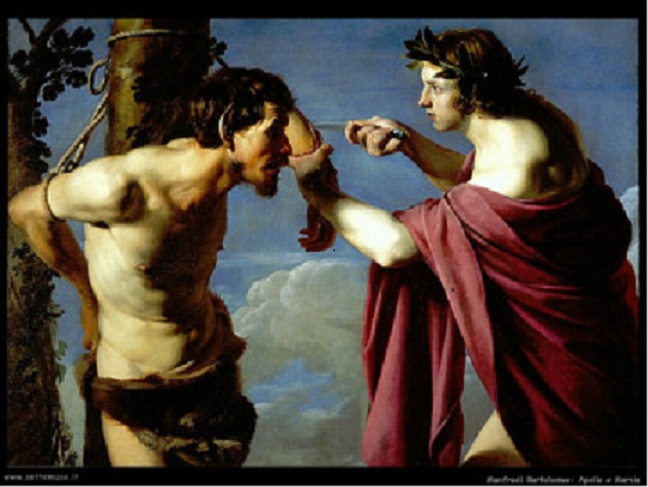La percezione estetica in circolo. Quando le scienze cognitive incontrano l'ermeneutica
DOI:
https://doi.org/10.13130/2240-9599/8701Abstract
The so-called ‘neuro-psychological approach’ to aesthetics studies aesthetic perception and evaluation in neural, psychological, and social terms. All the empirical results recently collected by this approach are in line with the notion of ‘hermeneutic circle’. In particular, they suggest that aesthetic perception involves a special and original integration and coordination of low-level and high-level processing dynamics, top-down control and bottom-up construction of stimuli, and immediate and extensive evaluative processes.Riferimenti bibliografici
Ahissar M. et al., 2008: Reverse hierarchies and sensory learning, «Philosophical Transaction of the Royal Society» 364, pp. 285-299.
Albright T., 2012: High-level vision: cognitive influences, in Kandel E.R. - Schwartz J.H. - Jessel T. (eds.), Principles of neural science, New York, McGraw-Hill, pp. 621-637.
Barrett L.F. - Bar M., 2009: See it with feeling: affective predictions during object perceptions, «Philosophical Transactions of the Royal Society» 358, pp. 361-374.
Brown S. et al., 2011: Naturalizing aesthetics: brain areas for aesthetic appraisal across sensory modalities, «NeuroImage» 58, pp. 250-258.
Berlyne D.E., 1970: Novelty, complexity, and hedonic value, «Perception and Psychophysics» 8, pp. 279-286.
Bullot N.J. - Reber R., 2013: The artful mind meets art history: towards a psycho-historical framework for the science of art appreciation, «Behavioral and Brain Sciences» 36, pp. 123-137.
Burgess P. - Dumontheil L. - Gilbert S., 2007: The gateway hypothesis of rostral prefrontal cortex function, «Trends in Cognitive Sciences» 11, pp. 290-298.
Chatterjee A., 2011: Neuroaesthetics: a coming of age story, «Journal of Cognitive Neuroscience» 23, pp. 53-62.
Chatterjee A., 2014: The aesthetic brain: how we evolved to desire beauty and enjoy art, New York, Oxford University Press.
Cupchik G.C. - Gignac A., 2007: Finding meaning and expressing emotion in response to artworks, «Visual Arts Research» 33, pp. 56-71.
Cupchik G.C. et al., 2009: Viewing artworks: contributions of cognitive control and perceptual facilitation to aesthetic experience, «Brain and Cognition» 70, pp. 84-91.
Cutting J.E., 2009: The end of art, «Empirical Studies in the Arts» 27, pp. 153-158.
de-Wit L. - Machilsen B. - Putzeys T., 2010: Predictive coding and the neural response to predictable stimuli, «Journal of Neuroscience» 30, pp. 8702-8703.
Ishai A. - Fairhall S. - Pepperell R., 2007: Perception, memory and aesthetics of indeterminate art, «Brain Research Bulletin» 73, pp. 319-324.
Jakobsen T. et al., 2006: Brain correlates of aesthetic judgment of beauty, «Neuroimage» 29, pp. 276-285.
Kandel E.R., 2012: L’età dell’inconscio. Arte, mente e cervello dalla grande Vienna ai nostri giorni, tr. it. di G. Guerriero, Milano, Cortina, 2013.
Fairhall S. - Ishai A., 2008: Neural correlates of object indeterminacy in art compositions, «Consciousness and Cognition» 17, pp. 923-932.
Forster M. - Leder H. - Ansorge U., 2013: It felt fluent, and i like it: subjective feeling of fluency rather than objective fluency determines liking, «Emotion» 13, pp. 280-289.
Leder H. et al., 2004: A model of aesthetic appreciation and aesthetic judgments, «British Journal of Psychology» 95, pp. 489-508.
Locher P. et al., 2007: Visual interest in pictorial art during an aesthetic experience, «Spatial Vision», 21, pp. 55-77.
Locher P., 2011: Contemporary experimental aesthetics: state of the art technology, «I-Perception» 2, pp. 697-707.
Mather G., 2013: The psychology of visual art: eye, brain and art, Cambridge, Cambridge University Press.
Meskin A. et al., 2013: Mere exposure to bad art, «British Journal of Aesthetics» 53, pp. 139-164.
Millis K. - Larson M., 2008: Applying the construction-integration framework to aesthetic response to representational artworks, «Discourse Processes» 45, pp. 263-287.
Nadal M. et al., 2008: Towards a framework for the study of the neural correlates of aesthetic preference, «Spatial Vision» 21, pp. 379-396.
Nadal M. - Pearce M.T., 2011: The Copenhagen neuroaesthetics conference: prospects and pitfalls for an emerging field, «Brain and Cognition» 76, pp. 172-183.
Ochsner K. et al., 2009: Bottom-up and top-down processes in emotion generation. Common and distinct neural mechanisms, «Psychological Science» 20, pp. 1322-1331.
Smith L.- Smith J., 2006: The nature and growth of aesthetic fluency, in Locher P. - Mondale C. - Dorfman L. (eds.), New directions in aesthetics, creativity, and the arts, Amityville, Baywood, pp. 47-58.
Van de Cruys S. - Wagerman J., 2011: Putting reward in art: a tentative prediction error account of visual art, «I-Perception» 2, pp. 1035-1062.
Winkielman P. - Zajonc R.B. - Schwartz N., 1997: Subliminal affective priming resists attributional interventions, «Cognition and Emotion» 11, pp. 433-465.
Winston A.S. - Cupchik G.C., 1992: The evaluation of high art and popular art by naïve and experienced viewers, in
«Visual Arts Research» 18, pp. 1-14.
Zajonc R.B., 2000: Feeling and thinking: closing the debate over the independence of affect, in Forgas J.P. (ed.), Feeling and thinking: the role of affect in social cognition, New York, Cambridge University Press, pp. 31-58.



